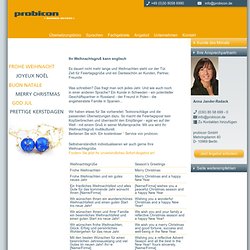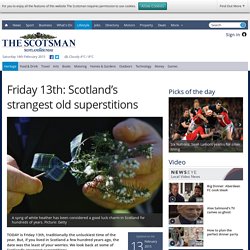

Christmas Traditions Around the World. Imgur: The most awesome images on the Internet. Übersetzungsfallen (Stefan Winterstein) Weihnachtsgrüße deutsch englisch. Es dauert nicht mehr lange und Weihnachten steht vor der Tür.

Zeit für Feiertagsgrüße und ein Dankeschön an Kunden, Partner, Freunde. Was schreiben? Das fragt man sich jedes Jahr. Und wie auch noch in einer anderen Sprache? Ein Kunde in Schweden - ein potentieller Geschäftspartner in Russland - der Freund in Polen - die angeheiratete Familie in Spanien... Wir haben etwas für Sie vorbereitet: Textvorschläge und die passenden Übersetzungen dazu. Selbstverständlich individualisieren wir auch gerne Ihre Weihnachtsgrüße.Fordern Sie jetzt Ihr unverbindliches Sofort-Angebot an! Über Weihnachtsgrüße hinaus übersetzen wir als Experte für Fachübersetzungen Fachtexte aller Art in fast alle europäischen und asiatischen Sprachen. Kostenlose Weihnachtsgrüße auch in Französisch, Italienisch, Niederländisch, Polnisch, Russisch, Schwedisch und Spanisch. probicon - Ihr Übersetzungsbüro für Fachübersetzungen. Alba - Beag Air Bheag.
English language did you knows. The Untranslatable Words Database. How To Name Animals in German. By John-Erik Jordan The German language has a pretty special ability: nouns, verbs, prepositions and adjectives can be stuck together like lego bricks to create new words that describe new things.

With German you can invent a name for just about anything. Call it the language’s lego brick-like quality, or Legosteineigenschaft (see what I just did there?). But do you really need such an elaborate process to name things as simple as skunks and seals? When broken down into their separate components, the names of familiar animals mutate into bizarre new creatures. Building Blocks So let’s grab some word bricks and see what happens when we stick them together. If it smells bad (stinken) then it’s a Stinktier (skunk). Call It Like You See It But not every animal is just a “___tier”. So if, in Germany, you come across a little carnivore that is meticulously washing (waschen) its food in a creek – you can simply describe it as a Waschbär (raccoon). When A Pig Is Not Just A Pig. Wenn Deutsche Englisch sprechen: 10 typische Denglisch-Patzer. Scottish Linguistics.
It’s not only the Scottish accent which sets us apart from other parts of the United Kingdom – for as any true Scot knows, Scotland actually has many accents; from the lilting burr of the Highlands to the famously difficult to understand twang of young Glaswegians!

For such a small country, we do have a huge amount of regional variance in accent, but our spoken dialect is broader still – offering a shared experience of the English language which differs in sometimes small but always significant ways from British Standard English. Our dialect, Scottish English, is further enhanced by borrowed words from the two languages of Scotland. Gaelic is the ancient tongue of the Highlands, but the language of the Lowlands, simply known as Scots, is recognised here too. Although it is closely linked to Standard English, it is not always mutually intelligible (think along the lines of the links between Norwegian and Danish!) Read About Tartan Colour Meanings.
Friday 13th: Scotland’s strangest old superstitions. TODAY is Friday 13th, traditionally the unluckiest time of the year.

But, if you lived in Scotland a few hundred years ago, the date was the least of your worries. We look back at some of Scotland’s strangest superstitions Superstitions are powerful. Even if you don’t believe in them, they’ve shown a lot of staying power. Many superstitions date back to pagan times, and, in some form, they’re still around today - just as many other customs from the pre-Christian period have died out. Scotland has a unique set of superstitions - some well known, others less so.
Children Until fairly recent history, childbirth was a perilous ordeal for Scottish women - and, therefore, a minefield of superstitions (only some of which are mentioned here, for the sake of brevity). Category: Culture - The English Student. 25 maps that explain the English language. English is the language of Shakespeare and the language of Chaucer.

It’s spoken in dozens of countries around the world, from the United States to a tiny island named Tristan da Cunha. It reflects the influences of centuries of international exchange, including conquest and colonization, from the Vikings through the 21st century. Here are 25 maps and charts that explain how English got started and evolved into the differently accented languages spoken today. The origins of English 1) Where English comes from English, like more than 400 other languages, is part of the Indo-European language family, sharing common roots not just with German and French but with Russian, Hindi, Punjabi, and Persian. 2) Where Indo-European languages are spoken in Europe today Saying that English is Indo-European, though, doesn’t really narrow it down much. 3) The Anglo-Saxon migration 4) The Danelaw The next source of English was Old Norse. 5)The Norman Conquest 6) The Great Vowel Shift.
25 German Snacks, Reviewed By Brits.